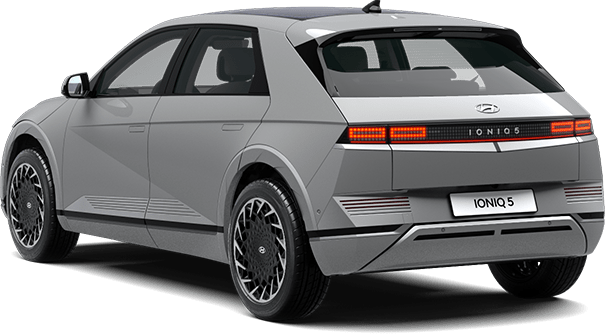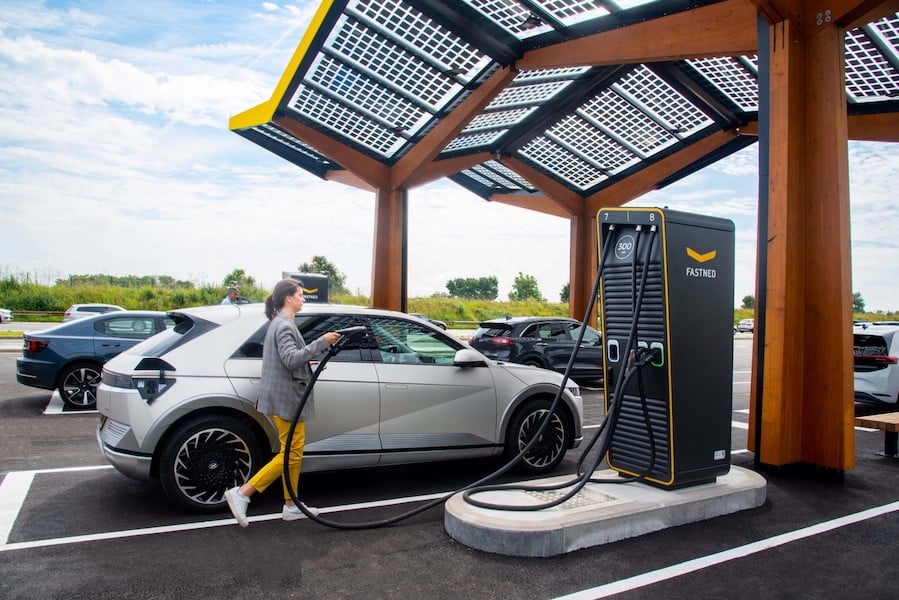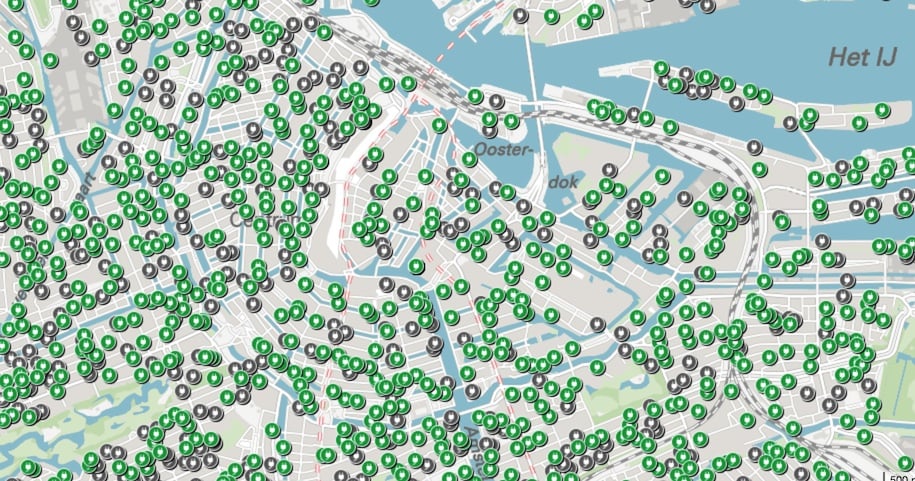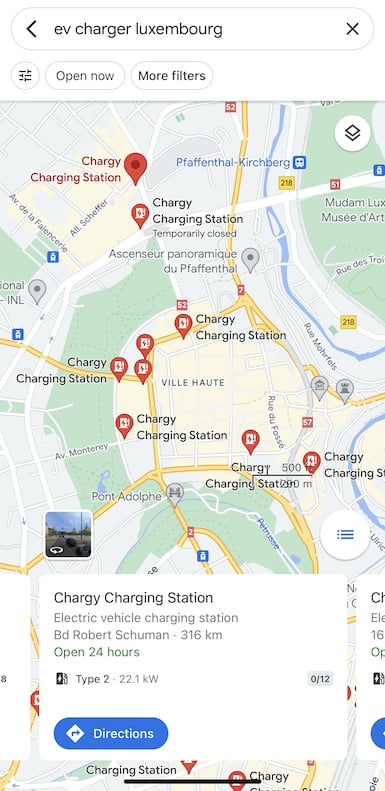EV Touring in Europe
March, 2022
Over the past few months I’ve been lucky enough to take some longer trips in different electric cars, and picked up a few things that I wish I’d known beforehand. So here are some of the lessons that I learned the hard way, so you don’t have to make the same mistakes 😄
I live in Amsterdam where owning a car is not essential, so instead I use sharing services when I need a car. Many of these services now only have electric cars, so I’ve had the opportunity to drive a few different models for short trips around the city. They’re a joy to drive and super convenient—you just unlock one of their cars in the neighborhood with an app, pay a few cents per minute and can park anywhere and recharge for nothing.
Around the city, EVs are pretty similar to petrol cars though. Where you really notice the difference is on longer drives. I’ve done two road trips so far, across five different countries and about 2000km total: one in a rented Kia Niro and the other in a brand new Hyundai Ioniq 5.

Highlights
- Driving an EV is just plain fun! They have incredible torque, great handling, and they sound like you’re in a spaceship. The guilt-free feeling of not burning petrol is just icing on the cake. Knowing that your ride is powered by sunshine or wind is actually pretty damn cool 😎
- We’re really spoiled for charging infrastructure in the Netherlands. There are thousands of public charging points just in Amsterdam, and every service station on the highway has DC fast chargers.
- Charging overnight is so handy. You plug in the car when you get home and just like your phone, it’s topped up and ready in the morning. Neither of the B&Bs we stayed at billed us anything to recharge which was a pleasant surprise.
- The cars I used had really good driver assist features, like adaptive cruise control and automatic steering on highways. I know these aren’t EV-specific, but they make it very easy to drive longer distances without fatigue, even in heavy traffic. Going from 130km/h to a crawling stop and back to highway speed without touching any pedals is magic 🤩
Lowlights
- Range is still an issue for long drives. EVs get roughly half the distance from a full charge than you would from a typical tank of petrol. It just means you’ll need a short charging stop every few hours of driving.
- DC fast chargers are really fast, but they’re also quite expensive: around double the price of a normal public charger. So you definitely pay for the convenience, but they’re only needed for topping up during a long trip, not for every day driving.
- “How far can you drive?” and “how fast does it charge?” are the most common questions, and the answer is… it’s complicated. AC vs DC chargers, different charging speeds, different cable plugs; it’s not as simple as filling up a tank. Batteries discharge more quickly when they’re nearly empty (like you phone probably does) so the remaining range can drop faster than you expect. You can charge them to 80% much more quickly than to 100% full. It all takes a while to figure out, but hopefully I can demystify some of it here!
- The networks of public charging points are run by different companies with different payment systems. Making a one-off payment for an “off network” charger can be quite a hassle. There is a heck of a lot that can be improved with standardising and simplifying the charge and payment experience across every country.
Lessons learned
Here’s what I had no idea about before I took an EV out of the city.
DC and AC chargers are very different
Electricity is electricity right? Sure, but there are big differences on how fast you can cram it into your car. In short, normal household power is AC (alternating current) but batteries only deal with DC (direct current). So the common charging points that are hooked up to the city grid are AC, while fast chargers can provide DC straight to your battery. It might sound like they’re on a spectrum from “slower to faster” but DC chargers are in a whole different league to AC.
AC chargers are:
- mostly found in cities
- relatively cheap, comparable to normal electricity prices
- designed for slow charging to 100%, for example overnight or while parked for a few hours
- typically rated at 7, 11 or 22kW charging speeds
For comparison, charging from a regular household power socket tops out at around 2.5kW. You can charge from them, but it’s really slow!
Whereas DC fast chargers are:
- more common on highways and the outskirts of cities
- more expensive per kWh (unit of charge), up to twice the price of AC
- designed for quick charging bursts to add range, but not to full and not for everyday usage
- rated from about 40kW to a hair-raising 350kW 😳
Just like your phone needs a charger to convert AC to DC, fast DC charging stations also have a converter. Except they’re the size of a fridge, really loud, and apparently cost a few hundred grand each. But that means that they’re able to shove power into your EV as fast as the battery can handle.

Charger speed doesn’t equal speed of charging
Just because a charger is rated at 100kW, it doesn’t mean you’re going to fill an empty 50kWh battery in half an hour. In theory that’s how simple the maths is, but it’s a long way from the reality of battery chemistry.
Batteries charge at different rates depending on their temperature and how full they are (and probably a hundred other factors). What that means is that you might be able to charge at top speed until around 80% full, but then charging will slow dramatically so that the last 20% might take just as long again. That’s fine if you’re charging overnight, but is why it’s typical to not fill up the whole battery when fast charging.
You’re also limited by the charging speed of the car itself. The Ioniq 5 I drove could charge at up to 220kW DC so can fill from 10% to 80% in just under 20 minutes which is quite impressive. It’s worth finding out the charging limits of the car so that you don’t pay more to use a 350kW charger when the car can only take say 80kW.
Something that wasn’t obvious to me is that when you use an AC charger, the car needs to use its small internal DC converter. Several times I used public 22kW chargers and wondered why they weren’t adding the range I expected, but it turns out the Ioniq can only convert AC to DC at a maximum of 11kW.
Remaining range is optimistic
Every EV shows how much range is remaining, front and centre on the dashboard. Unfortunately it seems more like an aspirational figure, or assumes that you plan to drive downhill the whole way 😁
On my first EV trip, I was 230km from home and the battery had 300km range remaining, so I thought I’d make it easily. Everything was fine until about 100km to go, when the range started dropping noticeably faster than the distance remaining. Over the next 50km, I progressed quickly from “I’ll be fine” to “I should be able to make it” to “ok this is really pushing my luck” to having to pull over for a quick 5 minute charge. Doing 130km/h+ drains the battery a lot faster, but I was keeping a very steady speed with cruise control so assumed the range estimator could adjust.
Having the current power draw and remaining range display is useful, but in some ways it’s also less relaxing when you’re constantly aware of it. You really notice how much it gets affected by fast acceleration, driving up long hills, headwinds or autobahn speeds. Of course petrol cars are the same but you don’t notice the extra fuel you’re burning second by second.
Charging infrastructure varies widely between countries
As I mentioned, the Netherlands has a very high uptake of EVs (behind only Norway) so probably has the best charging infra on mainland Europe. This should give you an idea of the ridiculous number of public chargers in central Amsterdam:

If you expect similar coverage in other cities though, you’re in for a rude shock. The number of chargers thins out the further south and east you go across Europe, which makes sense when you consider GDP and the current cost of electric cars.
I’ve driven an EV into Belgium, Luxembourg, France and Germany and not had any real problems finding a charger, but it still pays to plan ahead and see what’s available at your destination. There are plenty of apps to find chargers, including Google and Apple Maps. I ended up searching like this most of the time:

Keep in mind that chargers can be occupied, out of order, or hard to find, so it’s best to stay flexible. I preferred to head for big clusters of chargers in car parks to improve the odds of one being available and working.
Some Aldi and Lidl supermarkets in Germany and Belgium have free chargers in the carpark, even DC fast chargers! I thought there would be a catch, but during store hours you really can just pull up and plug in for nothing. This is more of a nice bonus though, I wouldn’t rely on them.
Don’t forget about destination charging either, more and more hotels and B&Bs have electric car chargers available now.
Payment can be a pain
Paying for charging was probably the biggest hassle of EV touring. Every charge point generally has two different ways of paying:
- You subscribe to one of the charging providers and you get a swipe card that you use to start charging. This is great when it works, but the charger has to be on that providers network, and it’s unlikely that every charger that you use across different countries is on the same network. Sometimes the card doesn’t work even on a supported charger, which is frustrating.
- You need to make an ad-hoc payment, usually by scanning a QR code on the side of the charger, then signing up through their mobile site or app with your credit card. This can vary from a mildly inconvenient to an incredibly frustrating experience. The rates are also invariably higher than being on a subscription.
The perfect setup would be a single system across every country Europe-wide, ideally just using contactless phone or card payments instead of needing a particular swipe card. There’s also a big need for a centralised data source for the locations and availability of all chargers, so that we can use any app to look up every charger in a city, not just those on specific networks. It should be consistent, reliable, and seamless everywhere—just like it is with petrol stations.
I’m sure we’ll get there soon enough, more and more charging infrastructure is being built every year. Until then, EV touring in Europe is already a good experience, it just takes a little more planning and research.
It’s exciting to think how much better it will be 10 years from now! 🚗⚡️
Any comments or questions about this post? ✉️ nick @ this domain.
— Nick Randall
